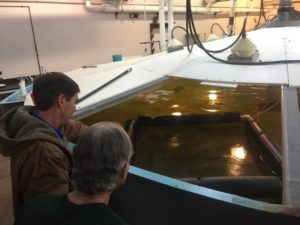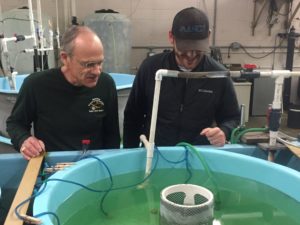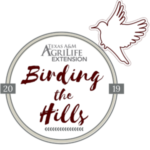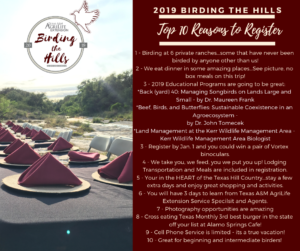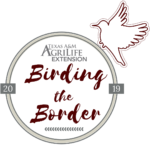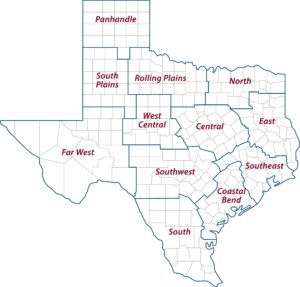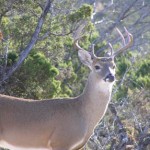Writer: Kay Ledbetter, 806-677-5608, skledbetter@ag.tamu.edu
Contact: Dr. Larry Redmon, 979-845-4826, l-redmon@tamu.edu
KERRVILLE – The Hill Country has its own special needs when it comes to managing livestock and wildlife and incorporating the millions of individuals who come to vacation, hunt and relax in the ranching environments.
The sixth annual Hill Country Land Stewardship Conference hosted by the Texas A&M AgriLife Extension Service April 25-26 in Kerrville offers a chance for landowners in the region to learn more about addressing issues that arise when ranching and tourism combine, said Dr. Larry Redmon, AgriLife Extension program leader, College Station.
“We keep coming back and offering speakers on everything from grazing to prescribed fire and legal issues to wildlife management because our clientele in the region say they want to learn more,” Redmon said.
The conference will open with on-site registration, check-in and breakfast at 7:30 a.m. April 25 at the Y.O. Ranch Hotel, 2033 Sidney Baker St. The program will begin at 8:30 a.m.
The conference fee is $75 and includes all meals, break refreshments and tour transportation costs. Registration will be available through April 15 at https://agriliferegister.tamu.edu/BennettTrust or 979-845-2604.
Redmon said several speakers will offer insight on some of the less-thought-of aspects of ranching or land ownership.
Topics and speakers include:
— Managing for Unwanted Plant Species, Dr. Robert Lyons, AgriLife Extension range specialist, Uvalde.
— Birding in the Hill Country, Dr. Maureen Frank, AgriLife Extension wildlife specialist, Uvalde.
— Top Laws Texas Landowners Need to Know, Dr. Tiffany Dowell Lashmet, AgriLife Extension agricultural law specialist, Amarillo.
— Using Prescribed Burning on Your Property, Dr. Morgan Treadwell, AgriLife Extension range specialist, San Angelo.
— How to Incorporate Exotics, Charly Seale, Exotic Wildlife Association executive director, Kerrville.
— Managing Your Whitetail Deer, Redmon.
The second day of the conference will be dedicated to tours. Attendees will pick from tours of the Hillingdon Ranch in Kendall County, where legacy management will be discussed, or the Cimarron Ranch in Kerr County, where wildlife management will be the topic.
For more information, contact Linda Francis at L-francis@tamu.edu or an AgriLife Extension agent in the region, or go to http://agrilife.org/bennetttrust/.
-30-
The post Hill Country land stewardship conference set April 25-26 in Kerrville appeared first on AgriLife Today.
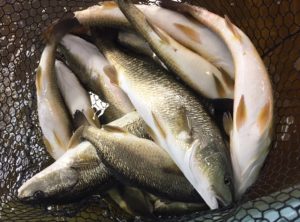
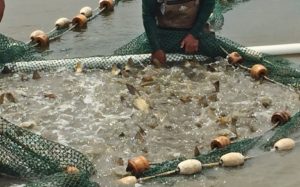





 Southern flounder are “floundering” as wild population densities decline. One of the big three sportfish in Texas, along with redfish and spotted seatrout, southern flounder are a sought after gamefish of commercial and recreational importance. Due to overharvest, accidental bycatch, water temperature rise and other factors, the flounder numbers are declining in Texas waterways. Along with Texas Parks and Wildlife, Texas A&M University’s Department of Wildlife and Fisheries’ Dr. Todd Sink and graduate research assistant Elizabeth Silvy have developed a methodology that may aid stock enhancement programs that promote the flounder fishery.
Southern flounder are “floundering” as wild population densities decline. One of the big three sportfish in Texas, along with redfish and spotted seatrout, southern flounder are a sought after gamefish of commercial and recreational importance. Due to overharvest, accidental bycatch, water temperature rise and other factors, the flounder numbers are declining in Texas waterways. Along with Texas Parks and Wildlife, Texas A&M University’s Department of Wildlife and Fisheries’ Dr. Todd Sink and graduate research assistant Elizabeth Silvy have developed a methodology that may aid stock enhancement programs that promote the flounder fishery. in the wild, and that larval flounder are temperature dependent when it comes time to form gonads. If temperatures are too high or too low, a majority of the offspring produced will be male. This has been proven true in the wild as well as in stock enhancement programs currently run by TPWD. To produce a hearty wild flounder stock, or even promote hatchery numbers, a majority of the offspring must be female, as one male can mate with a hundred females.
in the wild, and that larval flounder are temperature dependent when it comes time to form gonads. If temperatures are too high or too low, a majority of the offspring produced will be male. This has been proven true in the wild as well as in stock enhancement programs currently run by TPWD. To produce a hearty wild flounder stock, or even promote hatchery numbers, a majority of the offspring must be female, as one male can mate with a hundred females. ale are created. These female/male flounder can then be bred back to wild females collected from TPWD’s stock enhancement programs to produce all female progeny to be release in the wild.
ale are created. These female/male flounder can then be bred back to wild females collected from TPWD’s stock enhancement programs to produce all female progeny to be release in the wild. male reproductive organs in a genetically female fish. These fish will never be released into the wild; instead they will be kept as broodstock to breed with female flounder collected from the wild to maintain genetic diversity. These fish will only produce genetically and physically female flounder that have not been altered in any way. These offspring can then be released into the wild to supplement wild populations.
male reproductive organs in a genetically female fish. These fish will never be released into the wild; instead they will be kept as broodstock to breed with female flounder collected from the wild to maintain genetic diversity. These fish will only produce genetically and physically female flounder that have not been altered in any way. These offspring can then be released into the wild to supplement wild populations.
